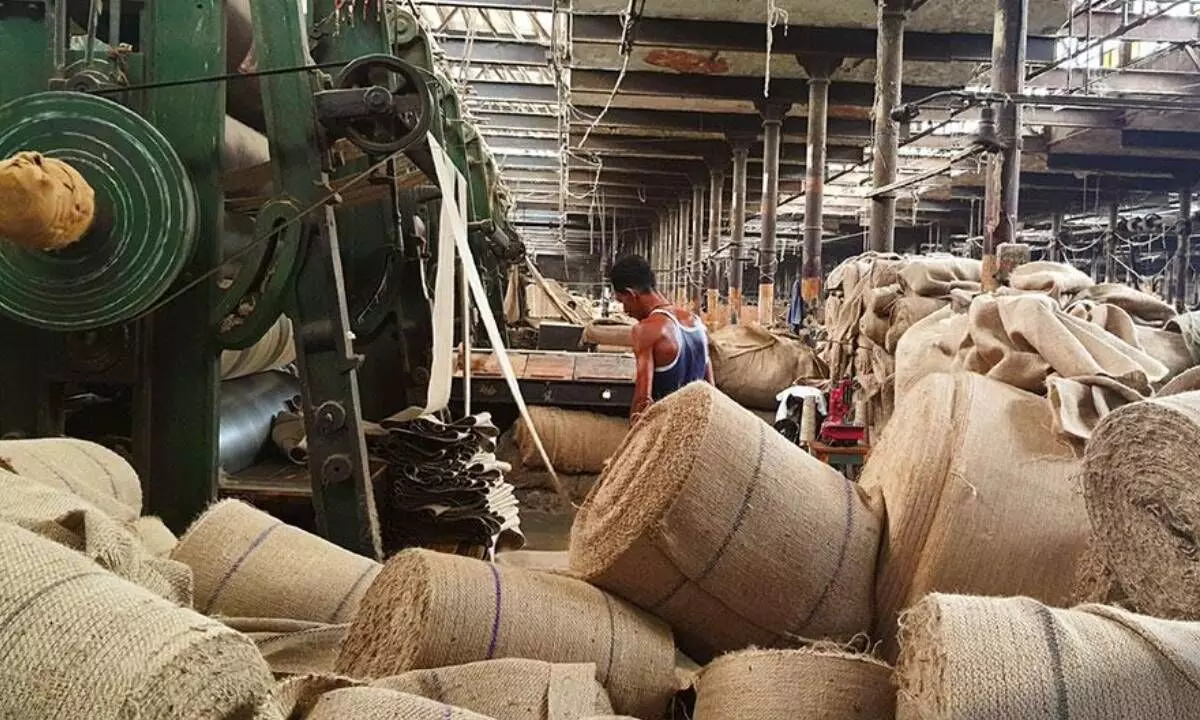A new MSP-driven era beckons Indian jute industry
image for illustrative purpose

The Jute Corporation of India (JCI), with its extensive network spread over eight states, is set for a new peak now that the MSP (minimum support price) operation for the upcoming jute season has commenced on July 1. The finer details and ironing out the complexities involved in the e-auction system are being worked out, said JCI Chairman and Managing Director Ajay Kr Jolly. JCI is in fact working on an e-auction platform in jute trading to modernise the supply chain of the environment-friendly fibre. If things move the way it has been envisaged, the new platform, in all likelihood, will be owned and managed by the corporation. The move coincides with its initiatives to bring in significant technological interventions to support the growth of the sector and plans to expand its reach to boost production of the golden fibre. The corporation, under the Union Ministry of Textiles, is also looking to broaden its reach to states like Jharkhand, Nagaland, Meghalaya and Tripura in order to increase raw jute production.
It is pertinent to mention that JCI’s primary mandate is to procure jute from farmers under the minimum support price programme. It is also working towards disseminating technological interventions for growth and enhanced transparency in the jute sector. The corporation has already procured 5.6 lakh quintals for the 2022-23 season, which is the highest in the last five years. It includes 1.36 lakh quintals of commercial procurement while the rest is for MSP operations.
The jute industry, on its part, has called upon JCI to have a buffer stock of 10 lakh bales for adequate intervention to meet any possible shortage. This year, the MSP for reference grade of TD3 has been raised by Rs 300 to Rs 5,050 per quintal in the 2023-24 season. Meanwhile, the Jute-ICARE project is in its ninth year’s ninth, providing benefits to more than 3.5 lakh farmers. Jute-ICARE plans to introduce a Geospatial Crop Surveillance & Monitoring system, in association with National Remote Sensing Centre (NRSC), to cover jute fields on a pan-India basis, to accurately ascertain the cultivable land and estimate jute production and productivity.
The project promises to help improve yields at a time when the overall acreage of jute cultivation has declined. The MoU with the National Remote Sensing Centre to introduce geospatial crop surveillance and monitoring system is expected to cover jute fields on a pan-India basis. This will help accurately estimate jute production as well as productivity by using scientific methods. It will collect data from 1,000 areas. Coming back to JCI’s latest move towards introduction of a proper e-auction platform, one must remember that the corporation operates 110 purchase centres and will engage about 500 extended centres in association with cooperatives and NGOs in eight states. The corporation has also appealed to people to use jute bags instead of plastics to protect the environment. JCI seems to be well poised to continue its relentless efforts to serve the jute farming community and reviving the glory days of the golden fiber.

